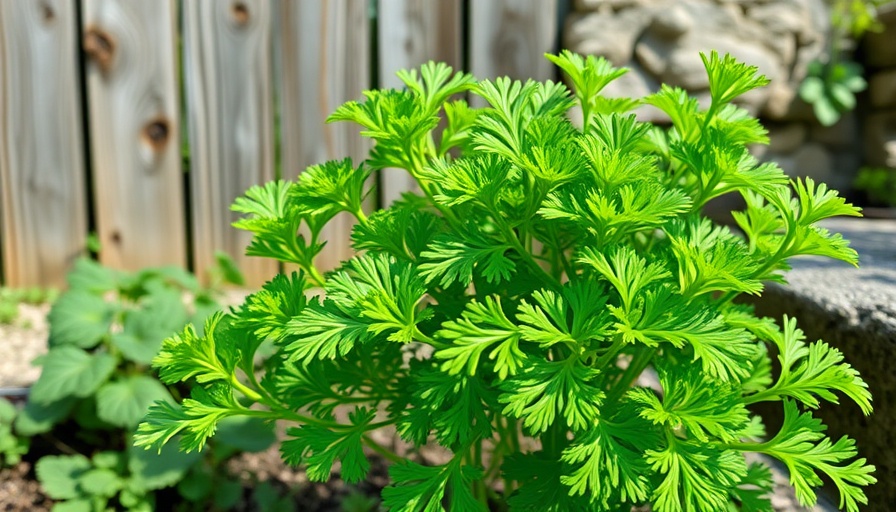
The Joy of Growing Your Own Parsley
Imagine stepping into your kitchen and snipping fresh parsley straight from your herb garden. Parsley is not only a versatile herb that adds flavor and nutrition to your meals but also a plant that can easily be grown at home, whether you have a sprawling backyard or a compact balcony. In this guide, we will explore everything you need to know to successfully cultivate parsley in your garden.
What Makes Parsley a Must-Have Herb?
Parsley (Petroselinum crispum) is often underestimated as just a garnish, yet it’s packed with vitamins A, C, and K, making it an excellent addition to your culinary arsenal. Beyond its nutritional benefits, parsley is recognized for its anti-inflammatory, antioxidant, and immune-boosting properties. Growing your own parsley provides a reliable supply of this healthful herb, encouraging you to experiment more in the kitchen with fresh ingredients.
Growing Conditions: The Essentials for Success
Understanding how to create an optimal environment for parsley is key to a successful harvest. This biennial herb thrives in USDA hardiness zones 5a to 9b, making it suitable for a wide range of climates. Parsley prefers rich, loamy soil that drains well, with a pH level between 6.0 and 7.0. Adequate sunlight is crucial; aim for 6 hours of full to partial sun exposure daily. Watering is another essential aspect—ensure your parsley receives moderate to high moisture, approximately 2-3 times per week.
Getting Started: Planting Parsley Seeds
When it comes to sowing parsley seeds, timing is everything. Plant them in the spring or summer for the best outcome. Space them 1-2 inches apart and set them at a depth of 1/4 inch. Once the seedlings emerge, thin them out to about 6 inches to allow proper growth. Consider creating raised garden beds for easier access and improved drainage, complementing your garden design.
Choosing the Best Parsley Cultivars
There are various types of parsley to choose from, with the two most common being curly leaf and flat leaf Italian parsley. Curly leaf is ideal for decorative purposes, while flat leaf parsley boasts a more robust flavor, making it the preferred choice for cooking. Hamburg parsley, with its edible root, adds a unique twist to the possibilities in your herb garden.
Common Pests and How to Manage Them
Like any plant, parsley is susceptible to pests, with aphids and caterpillars being the most common culprits. Implement organic gardening techniques such as companion planting and introducing beneficial insects like ladybugs. These natural methods will help you maintain a healthy parsley crop, enriching your vegetable gardening experience.
The Art of Harvesting and Storing Parsley
Harvesting parsley involves snipping off the outer leaves to allow the inner leaves to thrive and keep growing. Ideally, you should harvest parsley before it goes to flower for maximum flavor. To store parsley, washing and drying the leaves thoroughly before placing them in a plastic bag within the refrigerator will keep them fresh. Alternatively, consider drying or freezing your parsley for long-term use.
Making Parsley Part of Your Lifestyle
Incorporating parsley into your diet can lead to numerous health benefits and enhance your meals. From adding it to salads, soups, and sauces to using it as a primary flavoring herb, the possibilities are limitless. Planting your herbs creates a beautiful, inviting space that encourages healthy eating and sustainable living.
Getting Creative with Your Herb Garden
Imagine mixing parsley with vibrant flowers or using pots to create eye-catching arrangements. Parsley functions exceptionally well as a companion plant near roses and various vegetables, enhancing both aesthetics and garden health. Whether you are designing a front yard or a backyard landscape, think about how herbs like parsley can contribute to the overall beauty of your garden while serving practical purposes.
Conclusion: Immerse Yourself in the Art of Herbing
Growing parsley is not just a gardening project; it's a pathway to a healthier lifestyle. Start your journey in cultivating herbs today; your meals and well-being will thank you! Explore local gardening groups or online resources for connectivity and support in your gardening projects.
 Add Row
Add Row  Add
Add 




Write A Comment